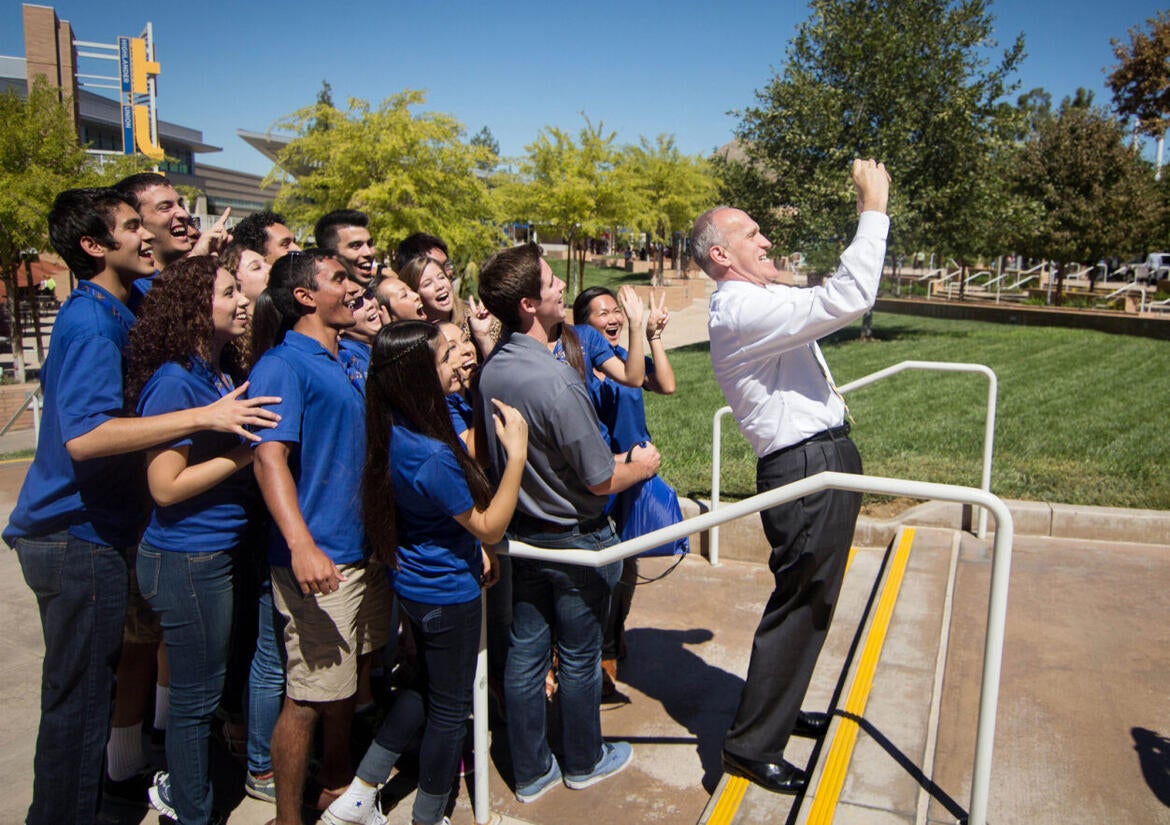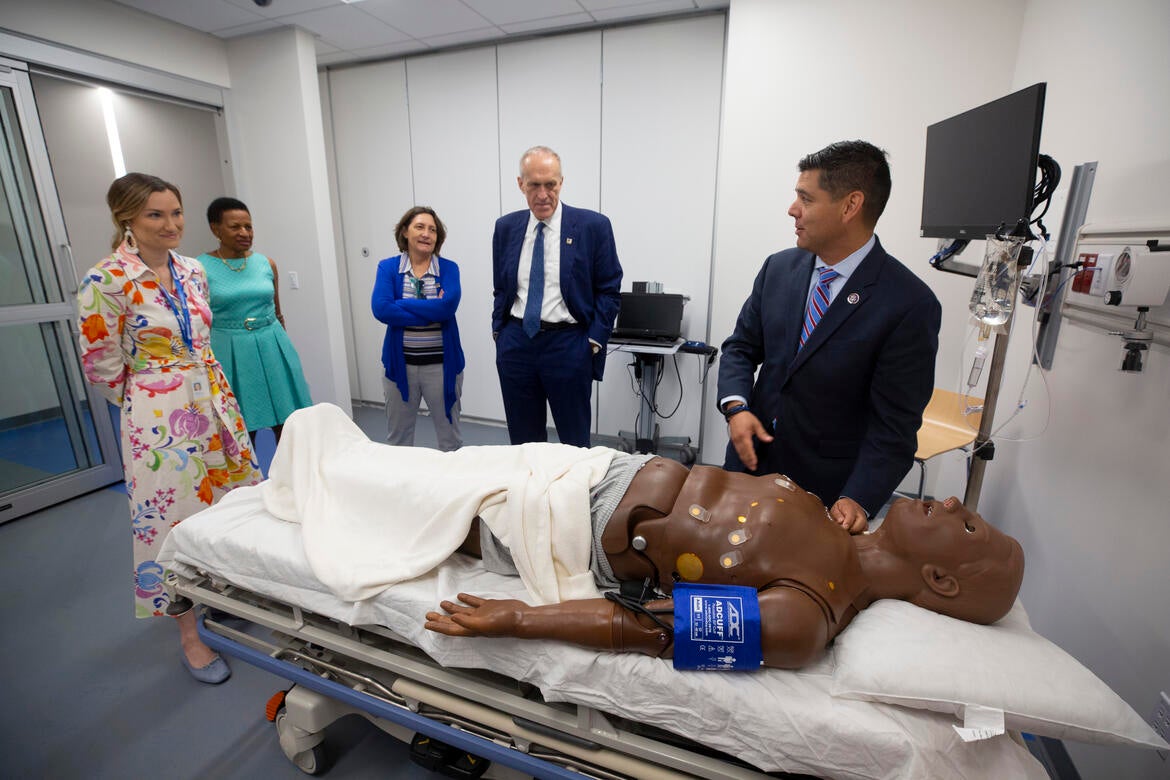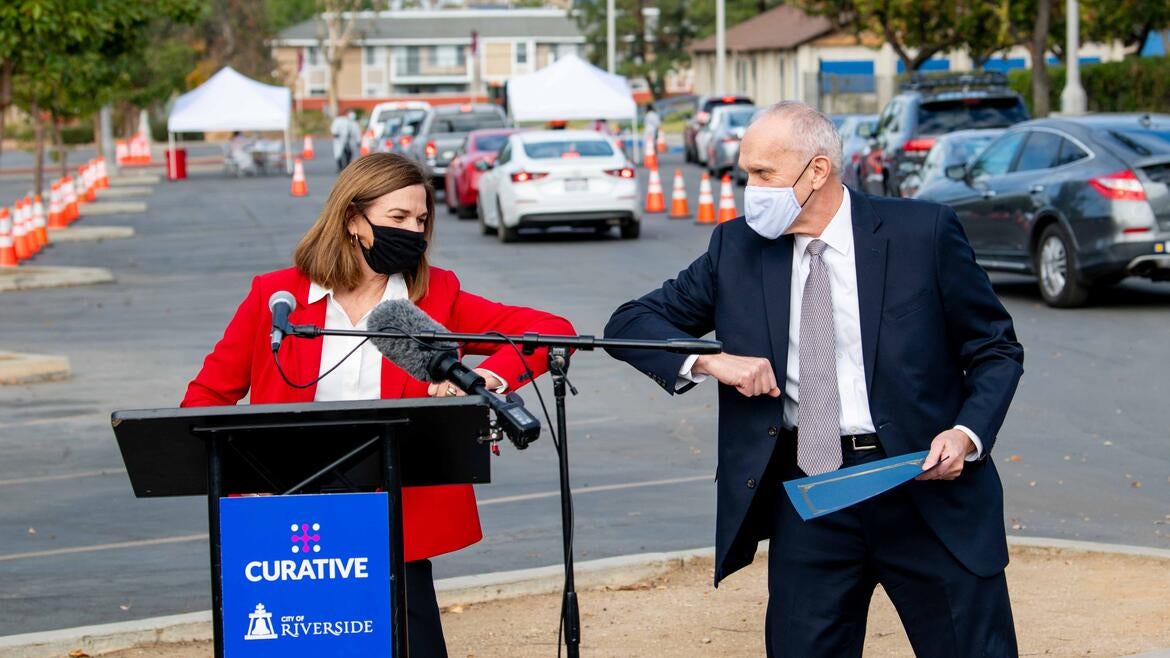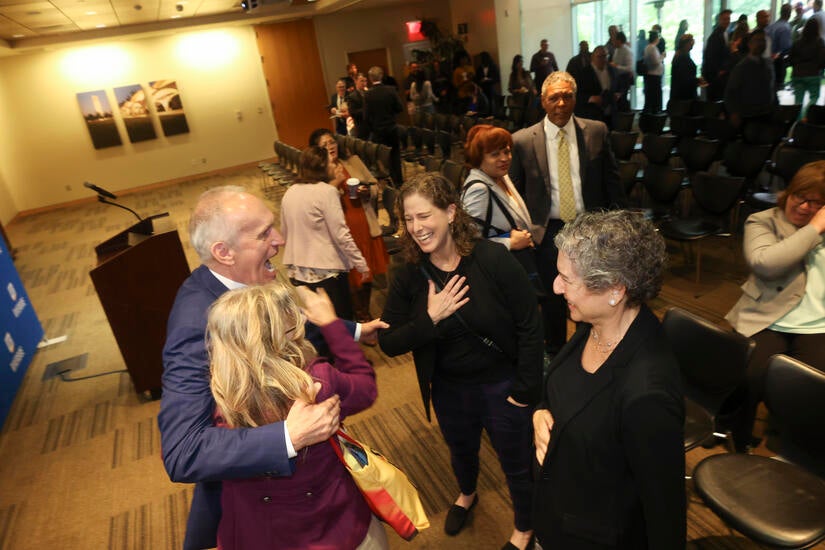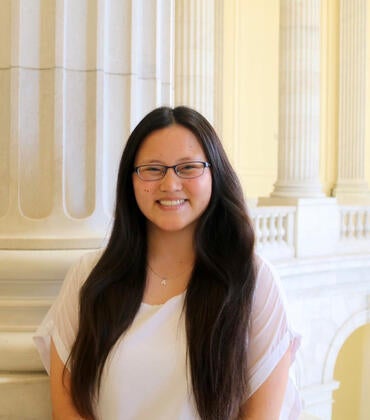Time accelerates during busy times; ask any short-order chef or – better – UC Riverside Chancellor Kim Wilcox.
So for many – including Wilcox – it’s surprising to hear the chancellor is at the 10-year mark.
Ten years ago, Wilcox was voted unanimously by the Board of Regents to be UCR’s ninth chancellor, coming to UCR from Michigan State, where he was provost from 2005 to 2013. “I look forward to helping make this great institution an even greater one in the years to come,” he said after the Aug. 8, 2013, Regents’ vote. His tenure began later that month.
To mark Chancellor Wilcox’s 10 years, here’s a quick look at 10 campus achievements: “10 for 10.”
New faculty hiring
Early in Wilcox’s tenure, there was a recognition that the number of faculty had to increase to attain the profile of a top-tier research university. UCR’s faculty publishing in journals, total number of research citations, and total grant expenditures was limited by scale. In 2013, UCR had 654 tenure-track faculty; as of this past academic year, there were 839. A hiring initiative resulted in 82 faculty hires over three academic years, 2015-16 through 2017-18.
The UCR faculty includes two Nobel Prize winners, 16 members of National Academies of science and medicine, four National Book Award finalists, and 56 winners of National Science Foundation CAREER Awards. That represents the highest percentage in the UC system.
In the past 10 years, the percentage of faculty of color at UCR has increased from 30% to 42%.
Growth in research dollars and budget
The reputation of the university’s research is partially reflected in the research dollars awarded and spent. Research expenditures have increased from $130 million in 2013 to almost $200 million today.
In 2013, when the chancellor came to campus, state revenues were beginning to return to their pre-recession levels. An effort was undertaken to make UCR’s budget simpler and more transparent, and better aligned with campus goals.
In 2012-13, the campus had revenues of $682 million, including $246 million in tuition and fees, and $178 million in state appropriations. For 2022-23, the campus had revenues of about $1.3 billion, including $343 million in tuition and fees for a student body that has grown by nearly 30%, and about $396 million in state appropriations.
Campus student population
Since 2013, the overall — undergraduate and graduate — student population has grown from about 21,000 to about 27,000. Among UCR undergraduates, more than 85% are non-white: 41% are Hispanic or Latino, 34% are Asian, 11% are white, 5.6% are Pacific Islander or Native Hawaiian, and more than 3% are Black.
At UCR, first-generation students comprise 58% of students – compared to 34% nationally. More than 50% are awarded Pell Grants, a federal government award for low-income families. At UCR, 87% of undergraduate students receive financial aid and 77% of those who receive aid have their full fees covered by grants and/or scholarships.
Campus facilities
The square footage on campus during Wilcox’s tenure has grown by 2 million square feet of building space and includes the addition of the Student Success Center and Multidisciplinary Research buildings, both of which have drawn the appreciation of the architectural community for their towering glass atriums and green features such as energy-efficient lighting and heating systems. Two apartment complexes, six and seven stories respectively, have been built on a 50-acre site called the North District to offset demand for campus housing, housing several thousand additional students, along with a student housing and dining complex, Dundee-Glasgow. A second apartment complex is set to break ground on the North District site, housing another 1,500 students. In a first-of-its-kind initiative, a third of residents will be local community college students.
Buildings just completed or under construction include the School of Medicine Education II and School of Business buildings, and a new, 40,000-square-foot Student Health and Counseling Center. The OASIS Clean Tech Park will also soon be under construction.
The iconic Barn was given something much more than a facelift, a $30 million rebuild for a facility that features a mix of covered outdoor seating and two indoor dining rooms.
Since 2013, the campus has spent almost $2 billion on capital projects. Much of that construction has come in the past five years, when $1.65 billion has been allocated. Of that $1.65 billion, about $600 million has been from state funds.
Graduation rates
UC Riverside’s four-year graduation rate increased 18 percentage points within 10 years, to 65%. It’s six-year graduation rate has increased to 77%.
The surge in graduation rates runs parallel to the 2013 creation of a Graduation Rate Taskforce that produced 37 recommendations on how to improve graduation rates. Many of those recommendations have since been implemented, including limiting undeclared major status to one year; offering the most critical and high-demand courses more frequently, including during summer session; and “front-loading” the freshman fall academic calendar with engaging classroom lecturers.
Social Mobility
Beginning in 2020, U.S. News & World Report created a new, stand-alone category in which to measure a university’s success in social mobility — the degree to which a university elevates the income status of its graduates. Many consider it to be a top indicator of higher education excellence.
For three consecutive years, UCR was ranked the No. 1 university among all privates and publics in the nation. For the past two years, UCR has been the No. 2 university overall.
For several years Wilcox has been a leading national voice on the need for reform in university rankings systems, and his commentary has appeared in the Washington Post, New York Times, Chronicle of Higher Education, and other media outlets.
UCR now consistently ranks among the nation’s leaders on all matters related to social mobility and success for low-income and underrepresented students. Earlier this year, the Chronicle of Higher Education named UCR the No. 1 university for retaining its low-income freshmen. And, Washington Monthly has ranked UCR in its top 10 for Pell Grant student performance the past two years.
Navigating the pandemic
In the space of a few hurried days, campuses across the world scrambled to figure out what a virtual higher education experience would look like. Campuses like UCR refined online and then hybrid education over the coming months, which stretched into parts of three academic years. Then, they worked to figure out a safe return to campus.
When the pandemic of 2020 began, UCR made a record-time move to an online learning environment. Prior to the pandemic, UCR had few online courses and limited infrastructure to support virtual instruction. UCR created new and expanded existing support services for students and faculty, including free software, loaner laptops, and Wi-Fi hotspots.
On the COVID-19 testing front, UCR was a leader in the UC system. In September 2020, UCR opened a homegrown diagnostic laboratory in the Multidisciplinary Research Building, an effort by faculty and partners across campus who repurposed existing equipment. By November, the lab was processing up to 600 tests per day.
Aggressive testing and overwhelming compliance by students and staff for mask, reporting, and vaccine mandates helped keep infections in check.
Super HSI
UCR was the first in the UC system to become a Hispanic-Serving Institution, or HSI. But in recent years, UCR took another step forward as one of only a few universities to qualify for what Chancellor Wilcox called a “Super HSI” in an op-ed in Inside Higher Ed.
In 2021, UCR become one of 24 universities to have earned the Seal of Excelencia, a certification for institutions that are intentional in their support of Latino students. There are now 30 institutions that have earned the Seal. Combined, the 30 Seal-certified institutions enrolled 13% and graduated 14% of all Latinos in the U.S. for the most recent year, and they are projecting to continue increasing their efforts to lead the nation. Additionally, the Andrew W. Mellon Foundation has funded Crossing Latinidades, 16 HSIs with Research 1 research status collaborating to further develop Latino Studies across the humanities. And the Bureau of Educational and Cultural Affairs has identified 46 HSIs as Fulbright HSI Leaders. UC Riverside was one of just five institutions acknowledged by all three programs.
School of Medicine and School of Public Policy
Concurrent with the chancellor’s tenure, UCR opened its School of Public Policy and School of Medicine, which both celebrate their 10-year anniversary.
For the School of Medicine, the occasion has been marked with the recent opening of a new School of Medicine education building that will increase enrollment to 500 students.
While the school was founded in 2013, it was built on nearly 40 years of medical education and biomedical sciences research. Between the UCR/UCLA Biomedical Sciences Program, later called the UCR/UCLA Thomas Haider Program in Biomedical Sciences, and the School of Medicine, hundreds of students passed through UC Riverside on the way toward a career in medicine.
The School of Medicine has an additional layer of mission beyond quality healthcare: improving access to health care for the people of Inland Southern California, which is a medically underserved region.
The School of Public Policy was the first school with an undergraduate public policy major in the entire UC system.
AAU membership
UCR’s 2020 Strategic Plan, adopted in 2008-2009 held: “UCR selected attaining the profile of an AAU institution as a guidepost for academic excellence because the organization focuses on metrics of importance to research-intensive universities, including funding for research and creative activity, research policy issues, and graduate and undergraduate education.”
The chancellor came to UCR after a career at universities that were members of the American Association of Universities, a consortium of the top research universities in North America. One of his primary goals was to build on UCR’s momentum toward AAU membership.
In the past 10 years, UCR’s research expenditures and graduation rates surged, among other factors, which include measures of faculty excellence.
On June 1, the AAU announced UCR was in a cohort of six universities that would be invited to join. There are now 71 member institutions in the AAU, which was founded in 1900.
“It signals UCR has fully ‘arrived’ in terms of being in the highest tier of the nation’s universities,” Wilcox said following the announcement.
